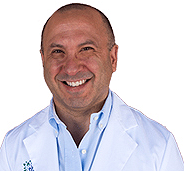Hvad er Propecia. Hairloss treatments by a Chicago Dermatologist and Coasmetic Surgeon
(PRWEB) January 18, 2004
Hair loss is due to a variety of causes, but has numerous treatment options. It is critical to know the cause of the hair loss before considering surgical correction. Hair replacement surgery is indicated for androgenetic hair loss, better known to many of us as male pattern baldness (what one’s Dad and/or Grandpa had).
In this commonly seen version of hair loss, certain hairs are programmed to miniaturize. Once started, this process usually continues and expands. In men, the areas most commonly affected are the front and top of the scalp. This version of hair loss may also occur in women. But in these cases, the distribution of hair loss is more diffuse over the whole scalp.
In men, a common, over-the-counter treatment option is Minoxidil, a solution which is placed directly to the scalp. It is reported to slow hair growth and even promote some hair growth. An orally taken pill (Propecia.) is also used by many men and is designed to help block the body’s programmed hair loss. Unfortunately, Propecia is not safe for use by women and both of these treatment options have limited capabilities of regrowing any significant amount of hair. However, they serve as a great adjunct in a patient undergoing surgical correction.
Hair replacement surgery has greatly improved in recent years for both men and women. The fake appearing hair lines, which left many looking like they had a doll’s head distribution of hair, has been scuttled. In the last decade, modern methods have developed allowing for the re-creation of hair; lines can look the way they once did. Today thousands and men and women enjoy the benefits of a thick-appearing head of hair and nobody knows they had any type of surgery. Hair transplantation is simply the transferring of hair from an area not affected by hair loss to another area in which hair has already fallen out. The procedure is done using local anesthesia. First, hair is removed form the back of the scalp. The hair is processed into individual hairs (micrografts) or groups of few hairs (minigrafts).
Recently, a new technique known as follicular unit extraction avoids the creation of a scar, and enables the removal of individual micrografts directly from the back of the head using very small punch blades; these leave virtually no visible scar. Next, the area requiring hair replacement (recipient site) is prepared, and the micrografts and minigrafts are inserted in a natural pattern. The pattern is dictated by the direction and pattern of the surrounding hairs. The procedure can take from four to eight hours, depending on the number of hair grafts transferred. Post-operative pain is very minimal and limited to a day or two. Any discomfort is routinely managed with either over-the-counter or prescription pain relievers. On average, it is recommended to take three to five days off from work post-operatively. The hair inserted will shed in a few weeks and then the new permanent hair will start regrowing in a few months.
More about Omeed Memar, MD, PhD
(telephone: 312.230.0180)
Dr. Memar graduated from the “M.D.,Ph.D.” program at the University of Texas Medical Branch. Throughout this extensive seven year training program, he gained indepth training in the basic science and clinical elements of medicine. His Ph.D. was in the field of immunopathology of skin, giving him extensive hands-on experience in pathological preparation and examination of skin tissue.
He then moved on to Milwaukee, Wisconsin, where he completed an internship, affording him a wide range of medical and surgical training, including extensive rotations in dermatology, dermatopathology, and head & neck surgery.
He next started his residency training in dermatology at the University of Illinois at Chicago, where he was trained by leaders in the field of dermatology, dermatopathology, hair biology and dermatologic surgery.
After residency, he gained further training in Mohs surgery and was certified by the American Society for Mohs Surgery as a Fellow. He has trained with numerous Mohs surgeons, including three different leaders in the field of dermatological surgery and Mohs Micrographic Surgery.
Dr. Memar has published in leading journals, co-authored numerous chapters for textbooks, designed medical devices in the field of dermatologic surgery, and presented his research across the country.
He has served as the dermatologic surgeon at Calumet Dermatology Associates, where he performed Mohs micrographic surgery, laser surgery, cosmetic procedures, and other surgeries of the skin. Currently, he is the medical director of Academic Dermatology & Skin Cancer Institute, where he performs Mohs surgery, cosmetic and laser surgery.
Dr. Memar is certified by the American Board of Dermatology, and the American Society for Mohs Surgery.
He is also a member of the American Academy of Cosmetic Surgery; European Academy of Cosmetic Surgery; American Academy of Facial Plastic & Reconstructive Surgery; American Society for Dermatologic Surgery; and Society for Investigative Dermatology.
Categorised as: hårtab behandling

Peter Hansen M.D. er fra København, Danmark. Han er bestyrelsen certificeret i familiemedicin og ser alle fraKøbenhavn.

Skriv et svar